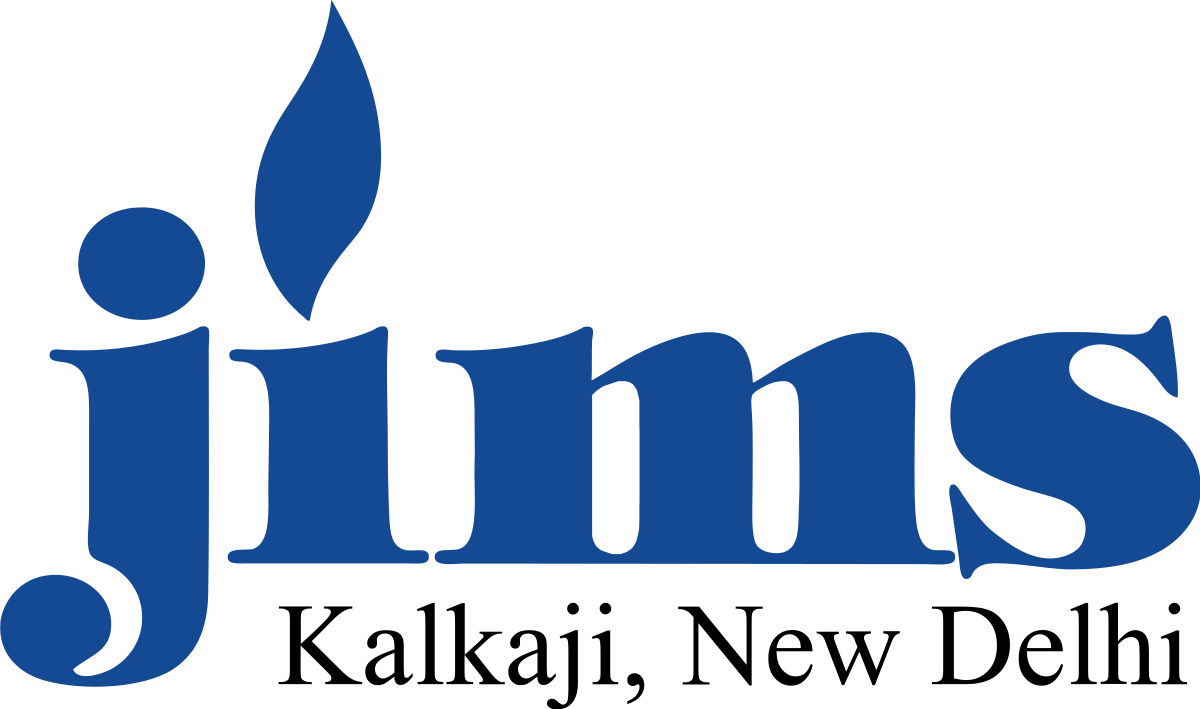
Summer Internship Project (SIP) is an indispensable part of the two-year PGDM & PGDM-IB Programme at Jagannath International Management School, Kalkaji.
SIP aims at widening the pupil’s outlook by providing an exposure to a realistic organizational and environmental situation. This will empower the students to explore an industry/organization, build a relationship with a prospective employer, or simply sharpen their skills in a familiar field. SIP also provides extremely useful knowledge and networking ordeal to the students. During the internship, the student gets a chance to put whatever he/she has learned in the first year of PGDM into use while working on a business plan, The organisation, in turn, benefits from the objective and unbiased perspective the student provides based on concepts and skills imbibed in the first year of the PGDM.
During the training the student stays under the supervision of a person in the organization who acts as his/her corporate guide. He/she will give direction on how the student should work during his/her association with the organization. In addition, each student is guided by a faculty of JIMS, Kalkaji, one of the best MBA college in Delhi, who is in constant touch with the student guiding and hand holding him throughout.
At the end of the training all the students have to prepare and submit a written project report. This need not necessarily be a statistical or analytical report; it could be a learning and experience sharing report. The project report has to be certified by the organization.
Summer Internship Project Report Format
1. Cover Page
This is the first page of the report which consists of the Title of the project, Institute’s name, Internal and External guide’s name and the details of the student.
2. Certificates
- Declaration of the student
- Certificate from the organization where training has been conducted
- Certificate from faculty guide
3. Content Page
Headings and subheading with page numbers
4. Acknowledgement
5. List of tables
6. List of Figures
7. List of symbols, Abbreviations or Nomenclature (optional)
8. Executive Summary
9. Chapter 1: Introduction and Conceptual Overview:
- Origin & development of the industry.
- Growth, present & future of industry.
- Defining the concept.
- objective of the project
Introduction about the topic, rationale behind the study Introduce the project. Explain the project. Explain the relevance of the topic & the study. Explain the concepts/ Theories which are being referred to in your study or which are important in doing this study. Also explain how these concepts are interrelated.
For Example:
Topic: Study of advertisement effectiveness of Astral adhesive.
Initially introduce and explain this study. You are required to spot light the importance of this study by referring to role of advertisements in creating brand position etc. You should also be referring to advertising expenditures of companies in general and how it is used to compete in market etc. Some data related to growth of advertising spends can also be shared.
This should be followed by explaining various relevant concepts like meaning and use of advertising, why effectiveness is important, what does effectiveness means in terms of brand recall, repeat purchase, creating brand perception and building brand loyalty. How it is measured. Tools of measurements etc.
10. Chapter 2 – Company Profile
- Origin
- Growth & present strategy
- Products & Services
- Market profile
Sectoral overview –
In this chapter you need to explain/ cover the sector/ industry (Adhesive here in our case) in terms of basic nature of sector, size of sector, growth of the sector, customer segments it serves, competitors’ details, opportunities in the industry, issues and policy matters etc. A sectoral SWOT can also be done here. Data has to be provided regarding the growth etc.
Most of the information is readily available in reports like Industry surveys, IBEF, MOSPI, Maps of India, KPMG, PWC, AC Nielsen, Ernyst & Young, Deolittes, Money control, CRISIL etc.
11. Chapter 3 – Research Methodology –
Title of Project/ Objectives
| Objectives of the Study | Sample and Sampling Method |
| Hypothesis | Primary Data |
| Secondary Data | Analysis technique |
| Limitation (if any) |
Methodology – Type of research – Explorative in your case. Type of Data – Secondary/ and some case primary. Identification of Population, Sample Size. Sampling method – Convenient Sampling in your case. Tools of analysis etc.
12. Chapter 4- Data Analysis and Interpretation
(USING SPSS OR ANY OTHER STATISTICS TOOL)
Presenting Data
Analysing the data using the statistical tools
Interpretation
13. Chapter 5- Findings & Inferences
14. Chapter 6- Recommendations and Conclusions
15. Appendices
An appendix is used for additional or supplementary materials, which has not found place in the main text. The materials that can be included here are original interview schedules/questionnaire, copies of covering letters used, documents and long explanatory notes to the text, statistical tests used and tables referred and any other material of considerable reference value.
| Questionnaires | List of tables |
| Glossary | Bibliography |
| References |
JIMS Kalkaji provides a great opportunity of placement through a good summer internship project, Live projects and early internships for which trained and experienced faculties hand hold their students.
JIMS, Kalkaji
#jims #jimsdelhi #managementcollegeindelhi #pgdmcollegesindelhi #mbacollegesindelhi #toppgdmCollegesindelhi #topbschoolsindelhi #pgdmadmissions2022 #pgdm(ib)admissions2022 #JIMS Kalkaji #SIP #PGDM#summer Internship Project #SIP Report
For more information visit: www.jagannath.org/
